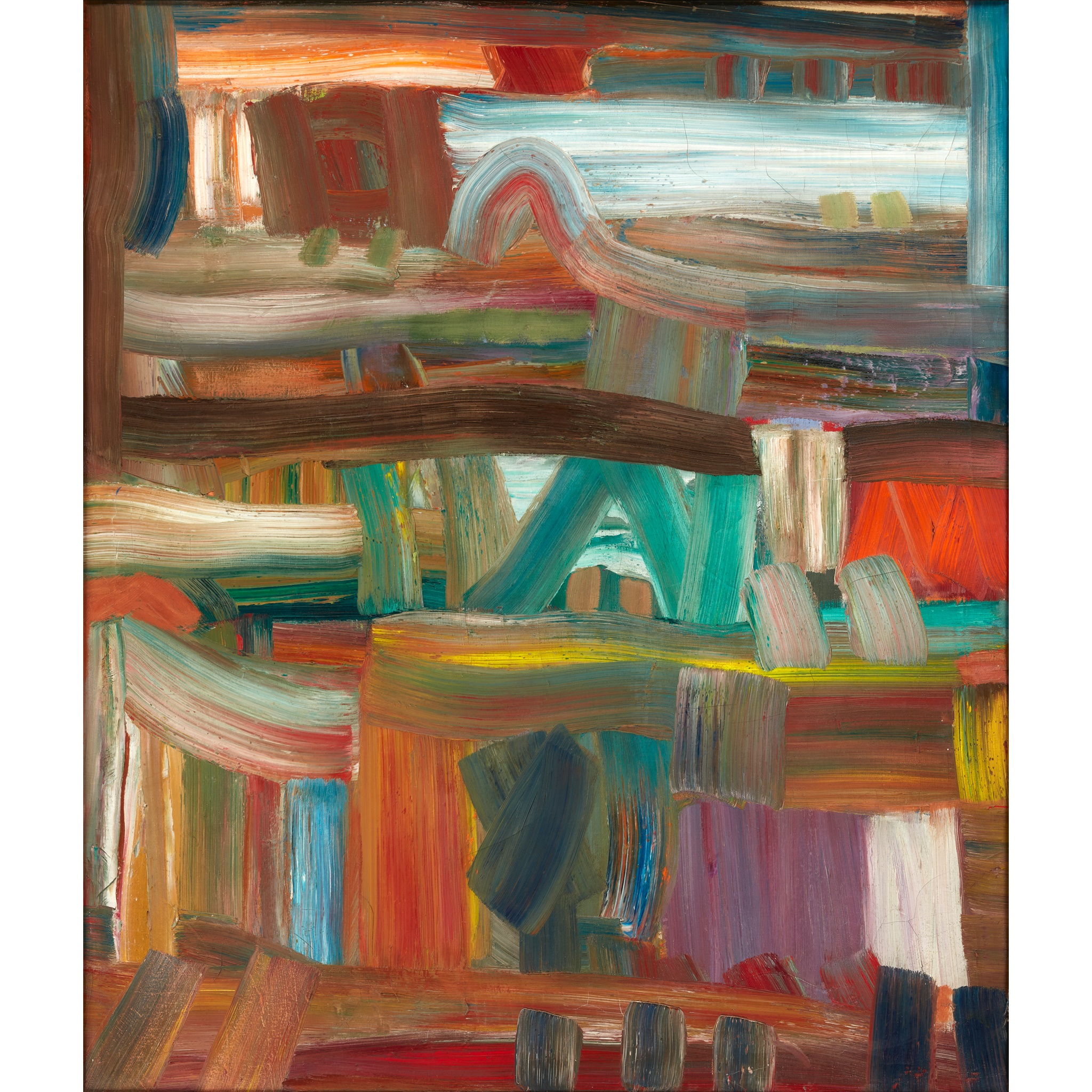ROBERT NATKIN (AMERICAN 1930-2010)
UNTITLED (ABSTRACT), C.1950s
£10,625
Contemporary & Post-War Art // Prints & Multiples
Auction: Contemporary & Post-War Art: 06 April 2022 | From 11:00
Description
Oil on canvas
Dimensions
100cm x 85cm (39.5in x 33.5in)
Provenance
Provenance: Purchased by the present owner from Robert Henry Adams Fine Art, Chicago Art Fair, Navy Pier, Chicago, USA 1990
Note: Robert Natkin was born into a dysfunctional, impoverished Chicago family in 1930. The cinema and theatre proved a welcome distraction which the young Natkin would enjoy up to six times a week, often with his father, a rag-dealer (and, as he enjoyed recalling, a failed tap dancer). An encounter with a book of Paul Klee’s paintings in 1947 proved pivotal for Natkin, who found the vibrant evocations of the subconscious revelatory. Against his parents’ protestations, he resolved to become an artist.
Klee’s influence is evident in the rhythmic, structural forms of ‘Untitled (Abstract)’, which is understood to date to the 1950s. Natkin stated that during this period he was influenced by the artificial lighting of theatre sets and Technicolour musicals, by turns dramatic and lurid, that had illuminated so much of his childhood. In this early work, intermingled pigments are pushed across the canvas, eliciting broad passages of moody, earthier tones, which are punctuated by flashes of pure cerulean, vermillion and tangerine. The bold linear mark-making anticipates the vertical planes that would dominate Natkin’s output throughout the 1960s, dubbed the ‘Apollo series’. Yet while his ‘Apollo’ paintings contrasted adjoining bands of solid colour to catalyse what he termed a ‘visual vibrato’, his earlier abstracts demonstrate an inquisitive and playful approach to his palette, as if he were testing his ability to manipulate colour and light.
Robert Natkin studied at the Art Institute of Chicago between 1948 and 1952, where he was afforded access to their collection of Post-Impressionist paintings. In the early 1950s Natkin moved to New York to commence a successful and varied exhibiting career, and immerse himself in the contemporary art scene, which at the time was preoccupied with Abstract Expressionism. Natkin recalled that he was first exposed to the style when reading Life magazine’s 1949 spread on Jackson Pollock, which asked readers ‘Is he the greatest living painter in the United States?’; Natkin professed to never having warmed to Pollock’s work, instead preferring Willem de Kooning, but above all remaining committed to European abstraction.
His most celebrated commission came in 1992, when he was invited to create a mural for the lobby of 1211 Avenue of the Americas, New York. Situated on the corner of the Rockefeller Centre, the vast composition is visible from the street, and has become a beloved local landmark. By this point Natkin was in his 60s and living with his family in Connecticut, but in the summer of 1991 he relocated to New York to work on the mural full-time upon an elevated scaffold. Natkin was commissioned to fill a space measuring twenty by forty-two feet, and preparatory studies therefore proved integral to the successful fulfilment of the commission; he was adamant that his composition should retain its emotional intensity and integrity when transcribed from the smaller studies to the towering lobby wall. By this point his palette was lighter, and his forms softer and more luscious, influenced by a particularly fruitful stay in England in 1974. ‘Study for “1211 – Mural”’ provides an intriguing insight into the developing composition, and evidences a concern for textural mark-making and architectural form.
Robert Natkin died in Connecticut in 2010, and is remembered as an important name in the development of American abstraction. He is well-represented in important national collections, including the Metropolitan Museum of Art, the Museum of Modern Art, the Solomon R. Guggenheim Museum, and the Centre Pompidou.
Footnote
Exhibited: Robert Henry Adams Fine Art, Chicago

